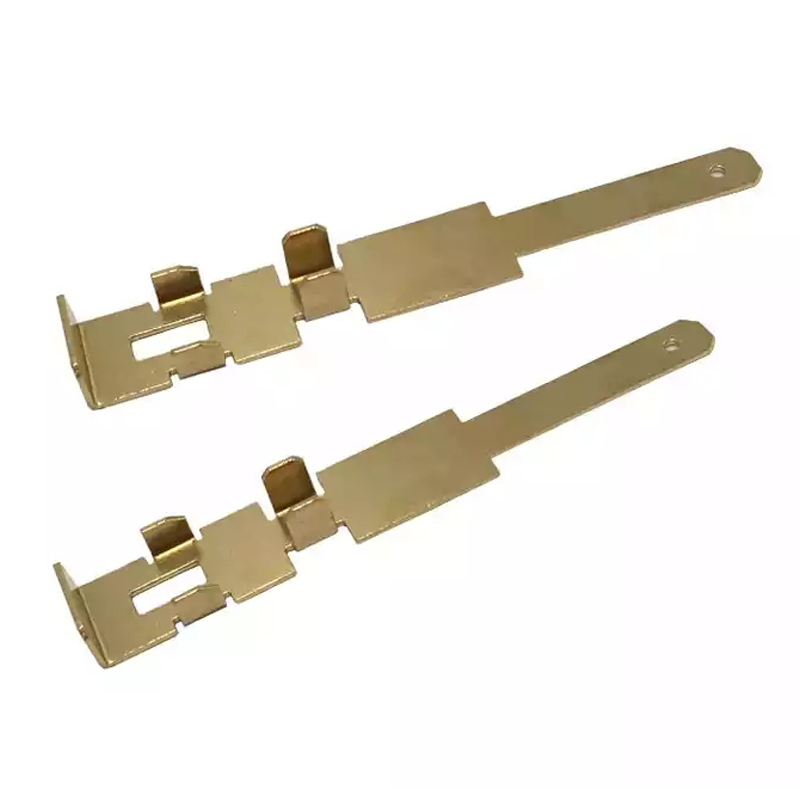Four: Stamping materials:
Stamping materials are an important factor affecting part quality and mold life. At present, the materials that can be stamped include not only low carbon steel, but also stainless steel, aluminum and aluminum alloys, copper and copper alloys, etc.

Steel plate is currently the most widely used raw material in automobile stamping. With the current requirements for lightweight car bodies, new materials such as high-strength steel plates and sandwich steel plates are increasingly used in automobile bodies.
1. Steel plate performance requirements
A. It has good mechanical properties and large deformation ability.
The mechanical properties of metal materials refer to tensile strength, yield strength, elongation, hardness, and plastic strain ratio.
High plastic strain ratio r value (anisotropic properties)
High work hardening index n value;
High elongation δ;
Low yield ratio (σs/σb);
Low aging index.
B. Good surface quality
There should be no obvious defects such as scars, cracks, inclusions and scratches on the surface of the steel plate. Among them, the inner panels of the body are allowed to have defects that do not affect the formability and paint adhesion, such as small bubbles, small scratches, small roller marks, slight scratches and slight oxidation; the outer panels must meet the quality of FD (O5) The grade means that the better side of the two sides must not have any defects, that is, it cannot affect the appearance quality after painting or the appearance quality after electroplating. The other side should meet the requirements of FB (O3).
2.Steel plate classification
A. According to thickness: thick plate (above 4mm), medium plate (3-4mm), thin plate (below 3mm)
Automotive body stamping parts are mainly thin plates:
B. According to rolling state: hot rolled steel plate, cold rolled steel plate
Hot rolling is to soften the alloy at a temperature higher than the recrystallization temperature and then press the material into a thin sheet or billet cross-section using a pressing wheel to deform the material, but the physical properties of the material do not change. Hot-rolled plates have poor toughness and surface smoothness, and are relatively cheap. The hot rolling process is rough and cannot produce very thin steel.
Cold rolling is a process in which the material that has been hot rolled, pitted and oxidized is further rolled with a rolling wheel at a temperature lower than the recrystallization temperature of the alloy to allow the material to recrystallize. After repeated cold pressing - recrystallization - annealing - cold pressing (repeated 2 to 3 times), the metal in the material changes at the molecular level (recrystallization), and the physical properties of the alloy formed change. Therefore, it has good surface quality, high smoothness and high product dimensional accuracy. The performance and structure of the product can meet some special usage requirements.
Cold-rolled steel plates mainly include: cold-rolled carbon steel plates, cold-rolled low-carbon steel plates, cold-rolled steel plates for stamping, high-strength cold-rolled steel plates, etc.
Cold rolled carbon steel plate
S is the abbreviation of Steel, P is the abbreviation of Plate, the third letter C is the abbreviation of Cold, and N means that non-timeliness must be ensured.
Cold rolled low carbon steel plate
Five: Inspection tools:
The inspection tool is a special inspection equipment used to measure and evaluate the dimensional quality of parts.
In automobile manufacturing, whether for large stamping parts, interior parts, welding sub-assemblies, etc. with complex spatial geometry, or for simple small stamping parts, interior parts, etc., special inspection tools are often used as the main inspection method. , used to control product quality between processes.
Inspection tool inspection has the advantages of rapid, accurate, intuitive and convenient, and is especially suitable for mass production needs.
Inspection tools often consist of three parts:
①Frame and base part;
②The body part;
③Functional parts (functional parts include: quick chuck, positioning pin, detection pin, movable gap slider, measuring table, profile clamping plate, etc.).

